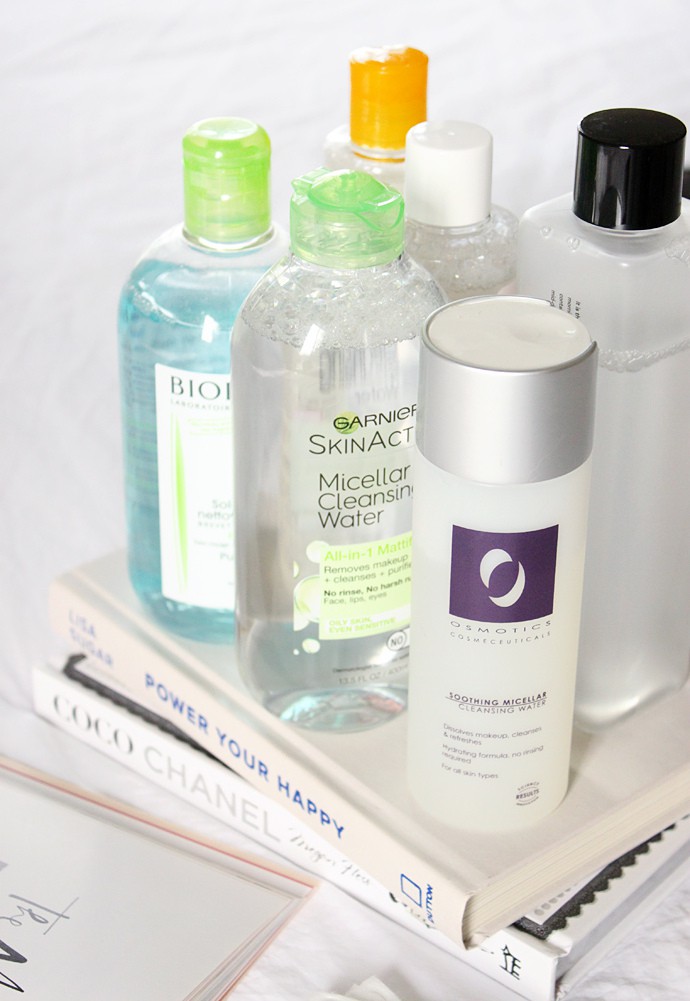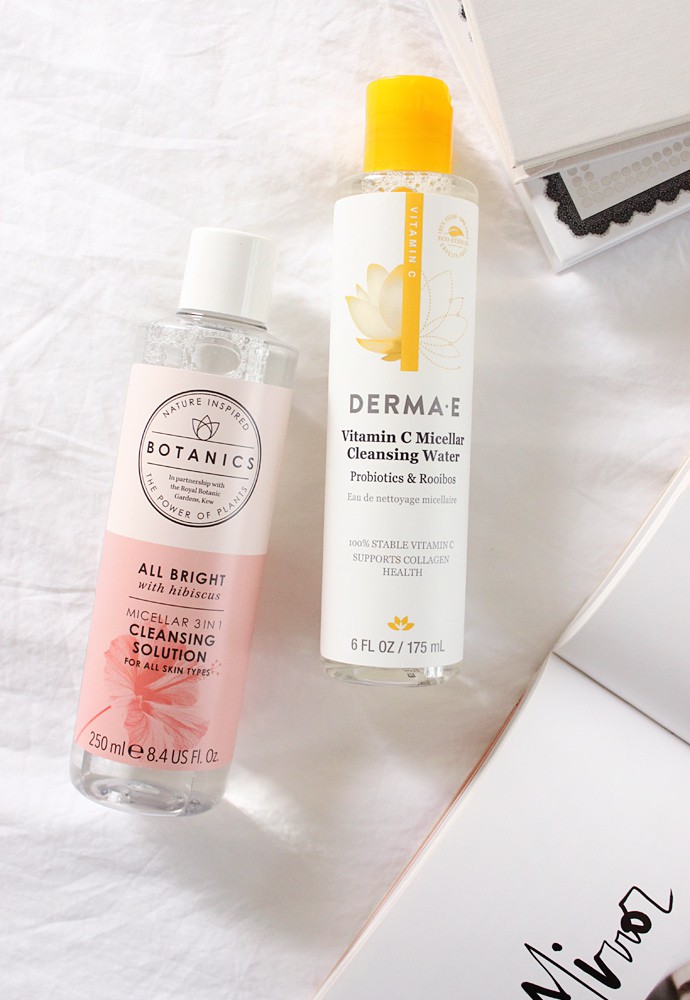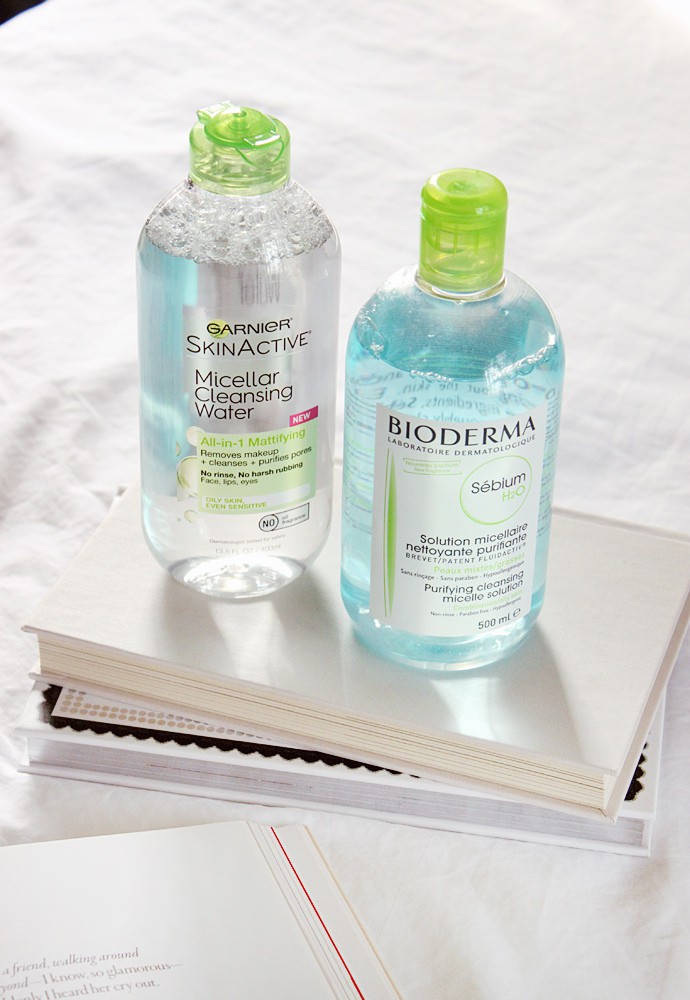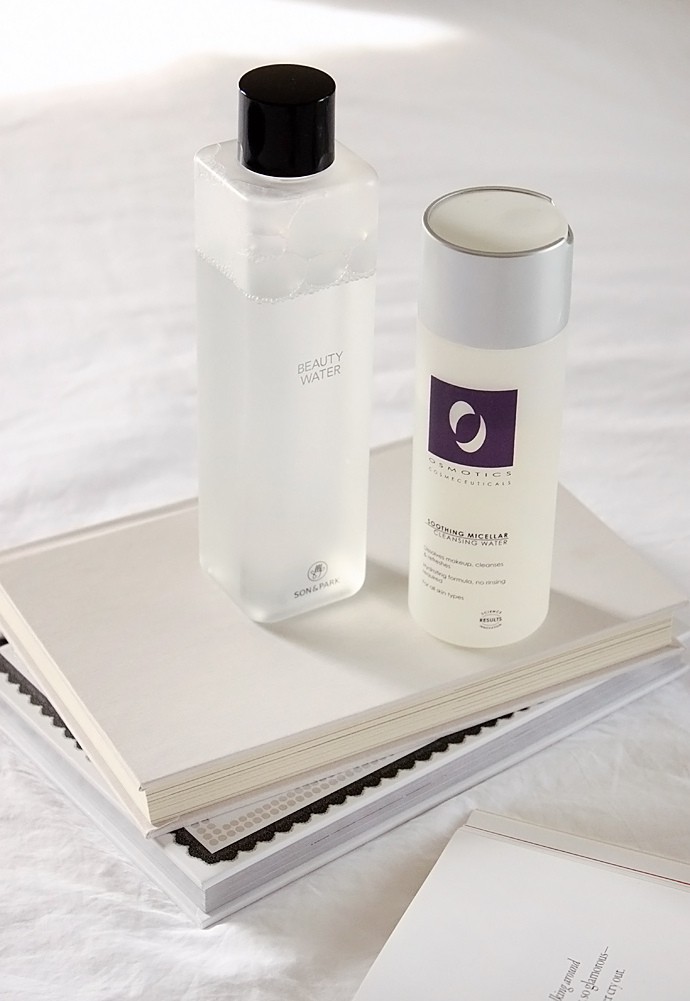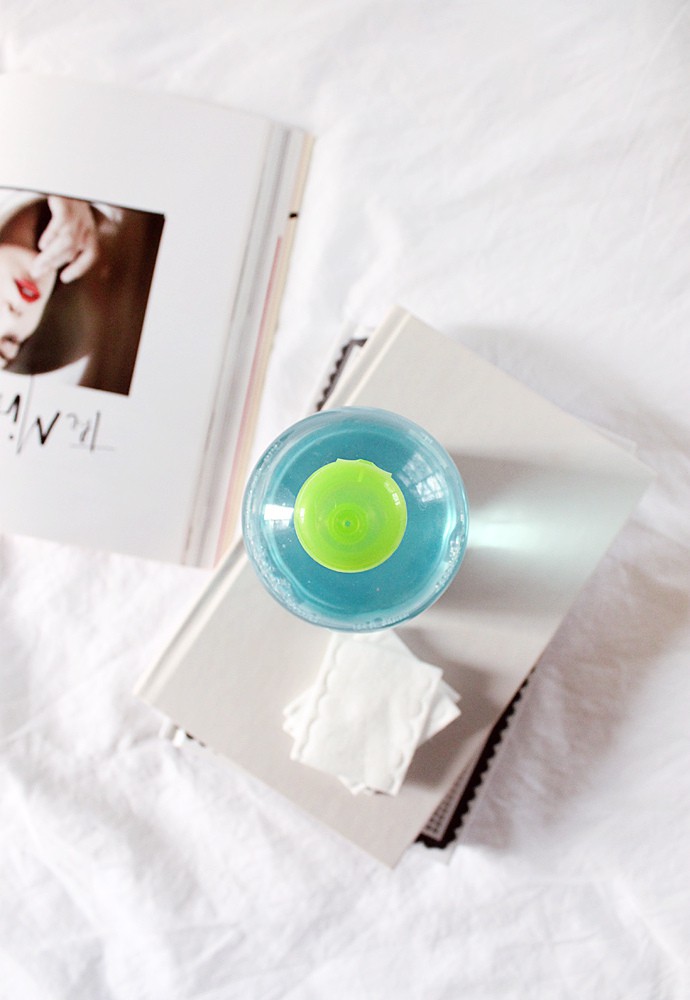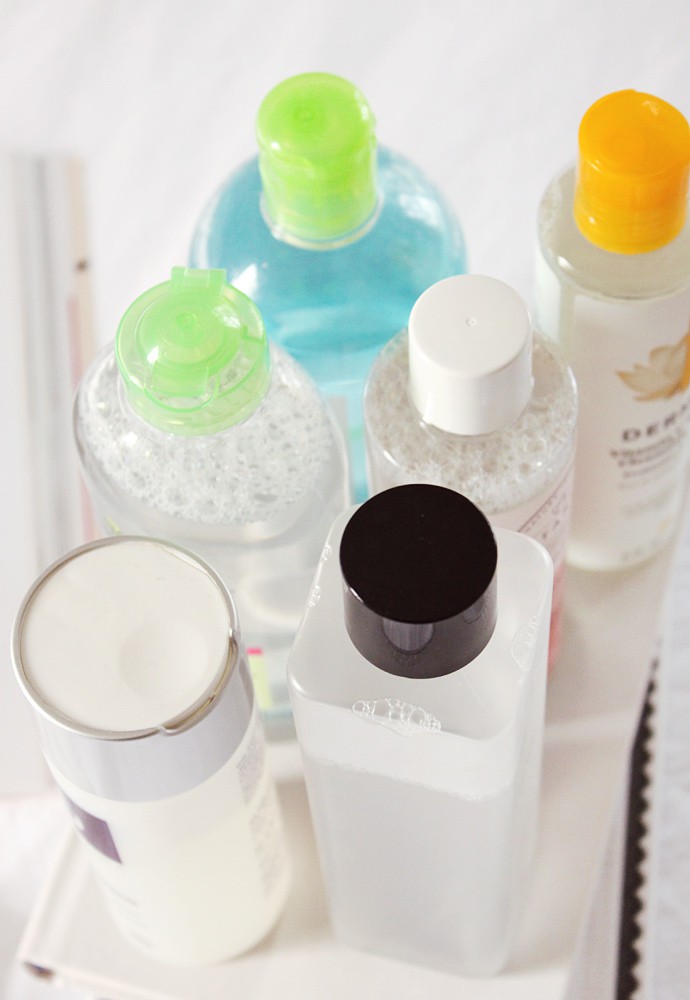I don’t know if you guys follow any other skincare bloggers and youtubers, but for a long time many of them have been advocating a very different morning skin cleansing approach. They say the best way to wash your skin in the morning is by using plain water and nothing else. After all, you don’t have any makeup or sunscreen to remove, so why dry it out unnecessarily with surfactants? Or at least that’s the general idea behind this advice. Now, I tried this method and it didn’t work for me as well as I’d hoped. Tap water is slightly alkaline, so yes, it is sufficient to remove the traces of my evening skincare and the small amount of excess oil accumulated throughout the night. However, I felt like it still didn’t remove the oils well enough, so instead I decided to try cleansing with micellar water.
I have a lot of different micellar waters in my collection, so I thought it would be fun to see which of them work best as AM cleansers. I also tested their pH just like I would with any other cleanser. Honestly, I don’t know why I never thought of doing that before, because it turns out that some of my favorites are actually pretty harsh so I can’t in good conscience recommend them anymore.
Son & Park Beauty Water ($30) – I found out about this product from Get It Beauty [I think?], a popular Korean talk show which is mostly famous for their makeovers and blind tests comparing various Western and Asian beauty products. I was thrilled when I saw this brand at Sephora, and immediately bought a bottle to try. In a nutshell, this ‘beauty water’ is touted as a cleanser, toner, and makeup remover in one, but I never actually used it to remove makeup. The formula contains AHAs and a lot of plant extracts, so it makes my skin feel fresh and clean while giving it a boost of hydration and antioxidants, and mildly exfoliates the dead skin cells. // pH 5.0
Garnier SkinActive All-in-1 Mattifying Micellar Cleansing Water ($8.99) – Garnier released a few different kinds of micellar water, and this one is meant for oily skin type. As the name suggests, the formula is supposed to mattify, remove makeup, and purify the pores. Unlike other micellar waters in my stash, this one turns a little foamy during the application. That foam eventually settles down to a fine powdery finish, which is where the mattifying effect comes from I assume. The liquid also contains Alcohol Denat., a drying ingredient that I don’t like using too much in my skincare products unless absolutely necessary. All in all, this micellar water definitely left my face feeling clean and refreshed, but since my skin is dehydrated I will have to stop using it because of the alcohol and because the pH is too high for my preference. // pH 6.5 – too alkaline.
Botanics All Bright Micellar 3in1 Cleansing Solution ($6.99) – I don’t see a lot of bloggers talking about this drugstore brand, but I actually like a lot of their stuff. Botanics skincare is fairly affordable and the products I got to try worked really well for my skin type. This micellar water was no exception. Unscented, alcohol-free, and paraben-free, it felt very gentle and refreshing to use every morning; my skin felt clean but not stripped of moisture. I will definitely add it to my permanent rotation. // pH 5.0
Derma E Vitamin C Micellar Cleansing Water ($12.95) – I’ve been using this micellar water and recommending it to others for months, but I never actually thought about testing the pH level. I genuinely enjoyed the way it made my skin feel, and I liked the idea of having live Lactobacillus probiotics right there in the bottle. However, even it it feels nice on a sensory level, you can’t really trick the skin’s microbiome. This toner creates an alkaline environment that disturbs the skin’s protective acid mantle. // pH 7.0 – too alkaline.
Bioderma Sebium Purifying Cleansing Micelle Solution ($14.90) – I used to buy Bioderma micellar waters exclusively before Garnier started making their own version. Sebium is meant for oily, combination, and congested skin in general. It purifies the pores really well, and makes me feel like I just used a regular foaming cleanser. The formula is alcohol-free, soap-free, and doesn’t contain added colors [the tint is natural]. It does however contain added fragrance, which makes the product smell like shampoo. The scent is not super strong, but you can’t miss it. // pH 5.0
Osmotics Soothing Micellar Cleansing Water ($28) – If you are into cosmeceuticals you probably already know about Osmotics. They make premium quality products that are borderline pro strength. This micellar water is no exception. It has the by far the most moisturizing formula of the bunch, yet at the same time it cleanses the skin well and leaves it feeling petal fresh and soft. It’s a good choice for someone with dry or dehydrated skin type. It works well as a makeup remover too, but I found that it irritated my eyes if I use it to remove mascara. The most likely culprit is Lavender Oil, because my eyes really hate it for some reason, but other than that I have no complaints. The formula is alcohol-free, paraben-free, dye-free, and does not contain added fragrance – the scent is 100% natural. // pH 5.5
WHY pH MATTERS:
Old timers already know the answer to this one, but we get new faces here every day, so this section is for anyone who was wondering why I make such a big deal about pH in cosmetics. Acid mantle is a thin film made up of our own sweat and sebum that protects the inner layers of the skin and internal organs from bacteria, viruses, and other bad guys. A pathogen that somehow finds its way into the deeper layers of the skin can potentially find its way into the bloodstream as well or cause localized inflammation by activating the body’s immune response. If you constantly have little bumps and irritations for seemingly no reason, it is possible that your cleanser might be the real culprit.
The pH level of acid mantle ranges between 4.5 and 6.2, and keeping it below 5.5 is considered to be ideal. By using alkaline products we disturb that protective barrier, allowing harmful bacteria to penetrate more easily. Which is why it has long been suspected that using soap and basic cleansers is one of the main causes of acne nowadays.
I’ll let you make your own decision of course, so here are some studies to check out if you want to learn more:
- The Concept of the Acid Mantle of the Skin: Its Relevance for the Choice of Skin Cleansers
- Correlation Between pH and Irritant Effect of Cleansers Marketed for Dry Skin
- The Effect of Detergents on Skin PH and Its Consequences
And if scientific studies aren’t your thing, here are two user-friendly but long-ish posts by fellow skincare bloggers that explain the concept of low pH life in more palatable terms:
- Skincare Discovery: Why the pH of Your Cleanser Matters
- The Importance of Fatty Acids, pH & the Moisture Barrier: How I Eliminated my Acne & Decreased my Skin Sensitivity
Even if you don’t have pH testing strips on hand, you can kind of get an idea whether your soap/cleanser is alkaline. Wash your hands with it, pat them dry, wait 2-3 minutes and see what happens. Do they feel squeaky clean? Are they dry? If so, your soap or cleanser is definitely too alkaline to use on the face.
BOTTOM LINE:
After testing all of the above I came to a conclusion that using micellar water in the morning is definitely a viable cleansing method for my combination/dehydrated skin type. Two products came up on top: Son & Park Beauty Water and Botanics All Bright Micellar 3in1 Cleansing Solution. The way they made my skin feel was a notch above the rest – clean, very soft, very fresh, but not tight in any way. My face felt sort of… conditioned? I will continue with this method for now using only my favorites, and will probably give away the remaining bottles to friends or family [since I have a no-compromise policy for skincare].
Have you tried using any non-traditional skin cleansing methods? How to you usually wash your face in the morning?

